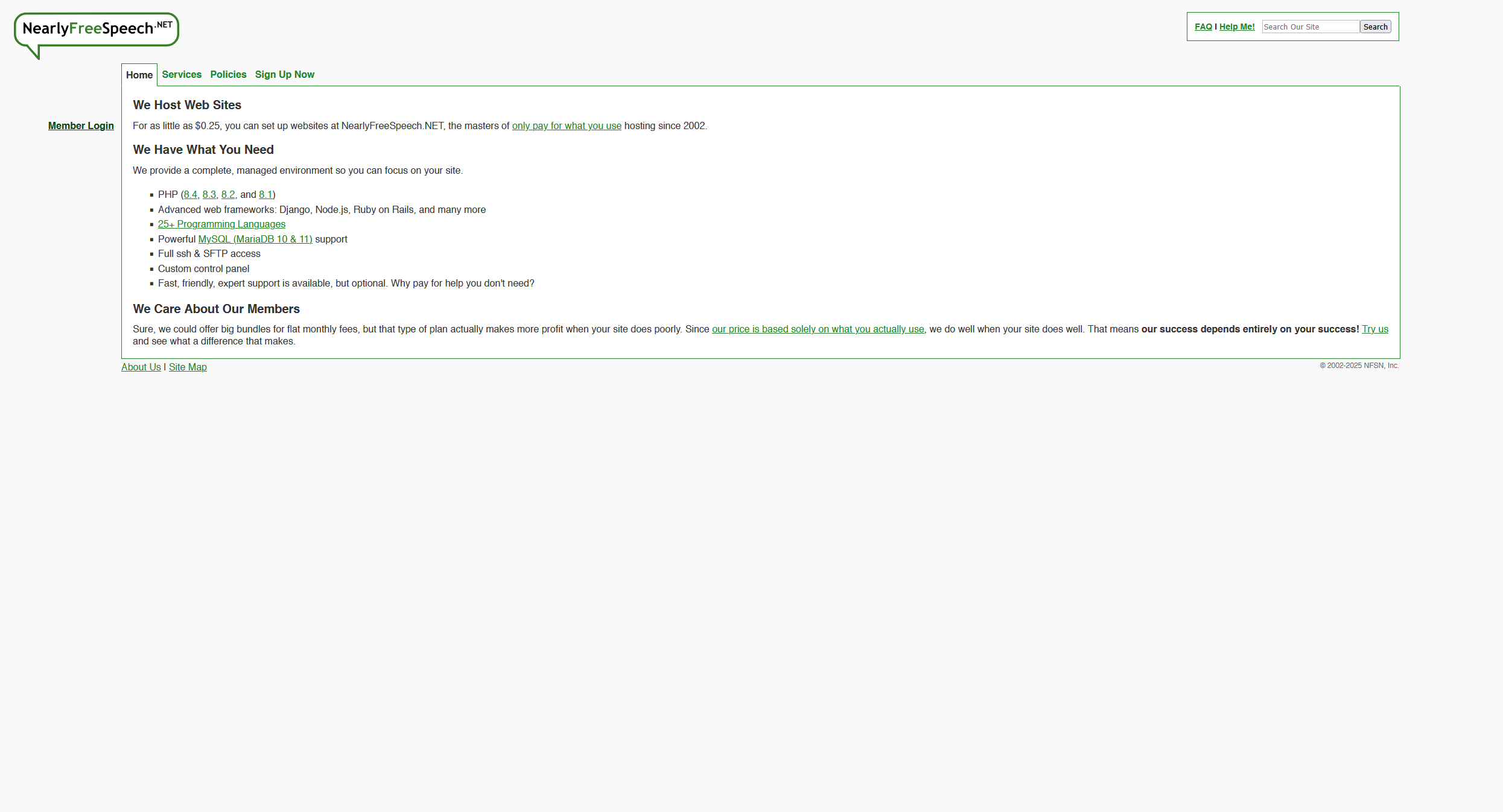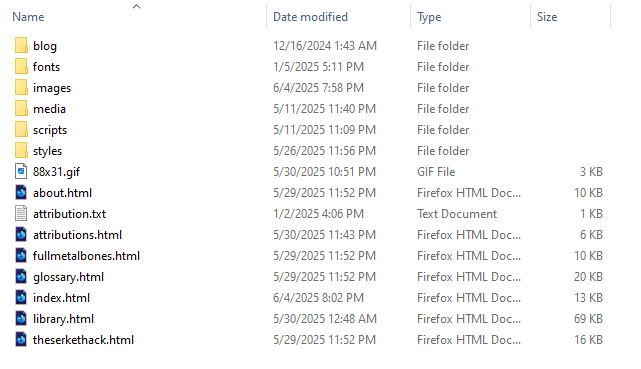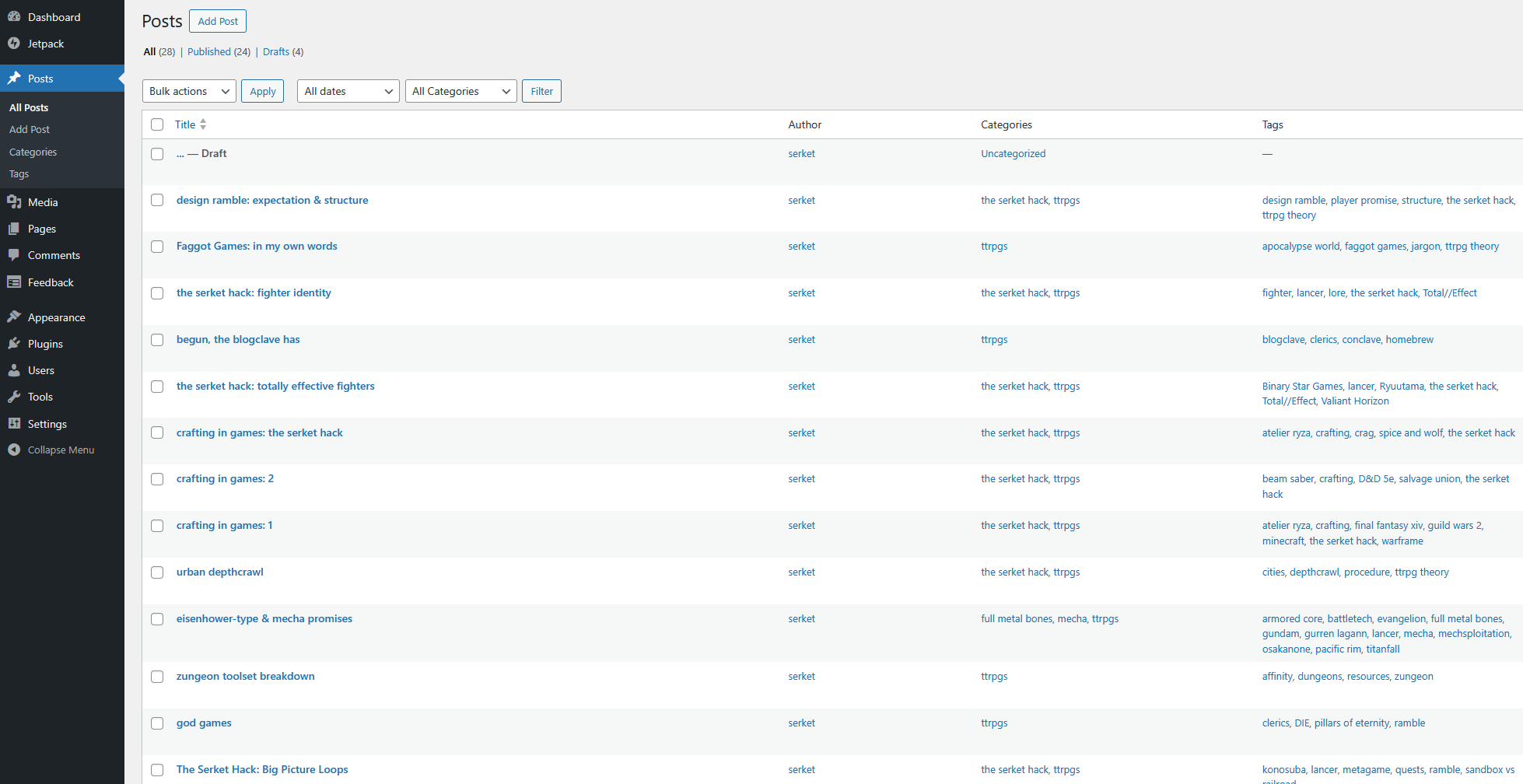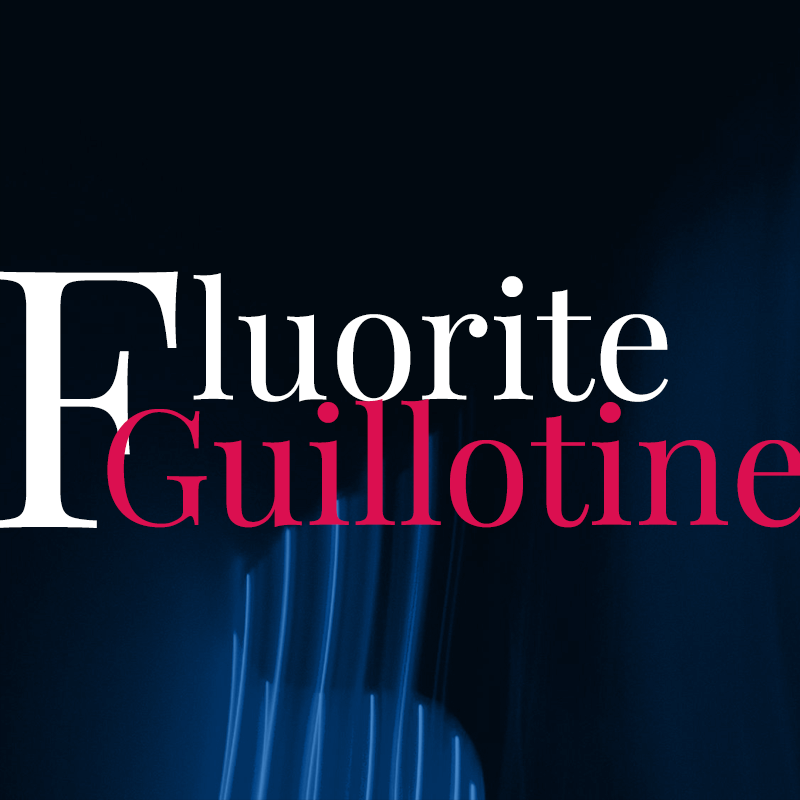In March of 2024 at the height of Cohost, I stumbled across a post telling people how to create their own Neocities website. The downfall of Twitter and the loss of many resources long-since taken for granted spurred many people to take up the banner of independent, decentralized websites. This is a larger movement that has existed for some time, but it’s gained popularity lately as social media has become worse and more unreliable.
All of this preamble to say that creating a website has been on my mind for some time now. I’ve had blogs before in the past, but all of them have been focused on something specific, like creative writing or video game development. None of them were broad enough to be considered a website about me. The goal of creating a website now is the social aspect: “find me here, when all else fails.” It’s a place ungoverned by the megacorporations, and if they want to sell my data, they’re going to have to work a little harder for it.
I think everybody should make their own website, if possible. To that end, I want to talk about how I made this website and the reasons why I used the tools that I did.
Hosting

One of my friends in college introduced me to NearlyFreeSpeech, and they’ve been a fantastic host for me ever since. They’re extremely good at hosting small independent websites because you only pay for the resources (i.e. bandwidth and disk space) that you actually use.
The tradeoff is that there is zero handholding. Beyond an FAQ page and some user forums, NFS expects you to put the Y in DIY. It can be difficult to figure out how to set up the site, but once you do, it’s smooth sailing from there.
Composition

Almost everything on the main website is made out of pure HTML and CSS. The only Javascript is creating the falling stars. This is intentional.
I’ve had multiple web designer jobs and seen firsthand the reliance modern website infrastructure has on frameworks like Angular or React. These are essentially collections of scripts published by Google or Meta and used to create cookie-cutter repeating elements so that developers can re-use existing code in multiple places on the same website. They also have a tendency to make a lot of websites look similar to each other, because they’re all using the same UI library. They might be incredibly useful, but they suck the soul out of any creative spirit and my website is a rebellion against that way of thinking.
An advantage of creating a website from the ground up is the independence I have. Even if the hosting provider were to go out of business, all of the website is sitting here on my hard drive and I can just as easily host from someone else — or even my own machine if necessary.
WordPress

This is the most controversial tool in my arsenal. I knew that I wanted to have a blog, which meant that I wanted to have some kind of Content Management System (CMS). A CMS within this context, fundamentally, is a set of Javascript that handles creating new HTML pages whenever I write a new blog post. With my skills, I could probably build one myself, but I knew that I wanted to have many of the features WordPress comes with. It’s much easier to write when you have a dashboard and an editor, and I wanted to have a way for people to be able to subscribe with their emails and comment on the posts directly.
When I started this project, I was confident in my ability to mold a WordPress theme into whatever I wanted. After several weeks of digging in the proverbial engine, I decided I was in over my head. I have a lot of front-end experience, but the inner workings of WordPress have a lot of opinions without much scaffolding for me to build off of. If I were to start over, I would look harder at alternative CMS’s, and I may yet pivot in the future if something happens.
For now though, WordPress works. I can write a post and get it posted. It sends them out in emails to my subscribers. I can upload images and embed them in the posts, even if resizing them is a pain. As long as it ain’t broke, I ain’t fixing it.
I started this blog in January and the front end of Fluorite Guillotine around the same time. It existed in a skeletal state for several months until I finished my Zungeon and decided that it was time to do something about my website. I challenged myself to something I called “Make-A-Website May” and spent most of my free time last month writing pages and fixing bugs. I’m not perfect, but I care a lot about making sure the website works and looks good on phones and different screen sizes, and it was a struggle to get the HTML and CSS wrangled without using any external libraries or resources.
Even though May is over, the website is a living thing and my independence means that I can make changes whenever I want. A couple days ago, I added some navigational context to the homepage as a sort of site map. I’m excited to see how this place grows with me, and I feel safer knowing that I’ve carved out my own slice of the internet free.
